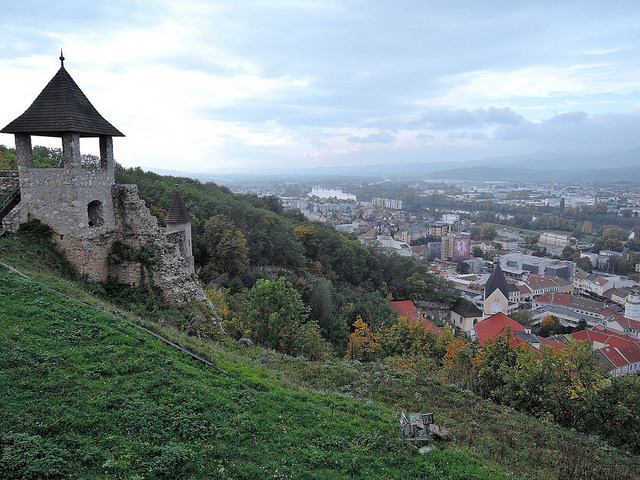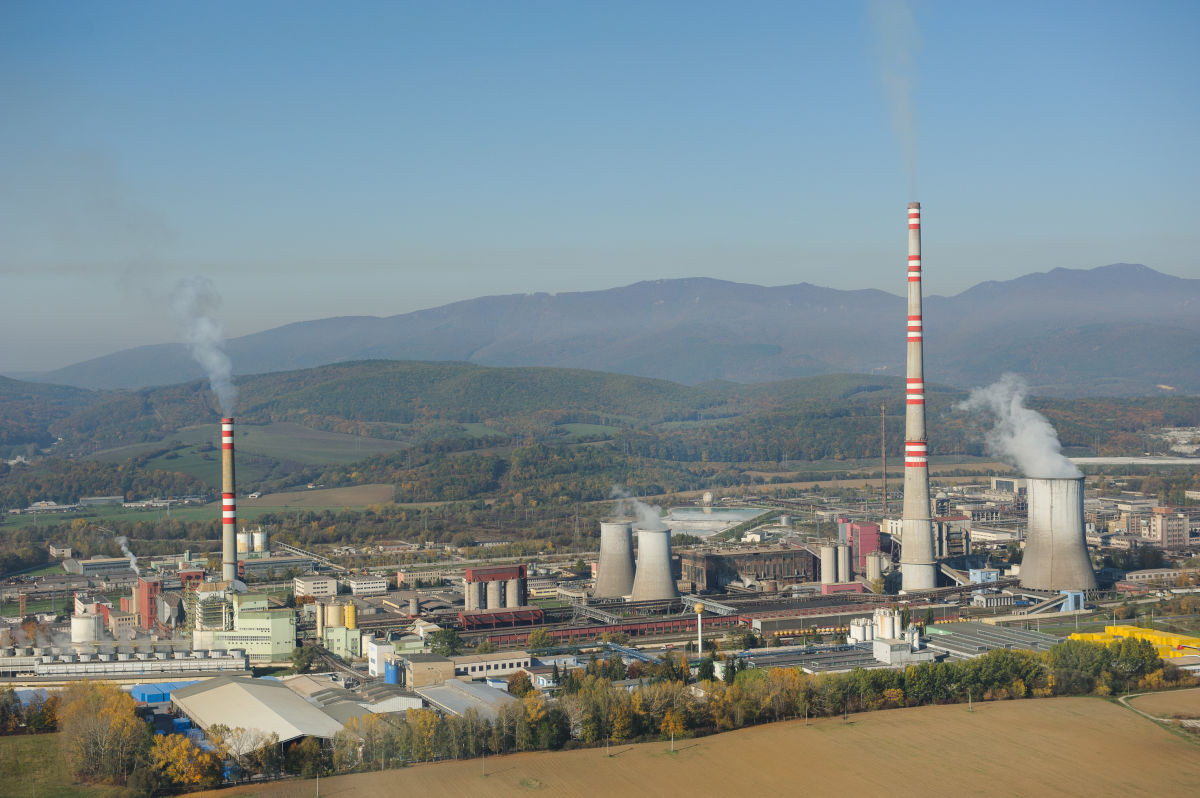
Regional authorities in Trenčín, western Slovakia, (temporarily) blocked the expansion of a mine by company HBP (Hornonitrianske bane Prievidza) by rejecting last month changes to the regional zoning plan that would have enabled the functioning of the new pit.
Especially problematic were plans by the company to divert the Nitra river and a railway in order to enable the mine to operate after 2023.
The decision of the regional assembly to place the future of the region above the interest of a single private mining company is very much welcome.
Now the Slovak government should make a clear commitment to phase out coal by 2023. A clear phaseout date would mean the Slovak authorities are putting the health of citizens and the protection of water, soil and climate above the interests of a private mining company.

Why should the Slovak government commit to a 2023 phaseout?
Now is the best opportunity in the history to transform the Upper Nitra region
Slovakia currently has the lowest unemployment rate in its history – it would be irresponsible not to use this opportunity to promote the fair transformation and the economic restructuring of the region.
In addition, the Upper Nitra region is one of the four pilot regions of the European Commission’s Platform on Coal Regions in Transition. We have to take advantage of this increased attention and support now, while they are there.
The first phase of the region’s transition ends in 2023
The government paper on mining reduction discusses the end of the first phase of the Upper Nitra transformation before 2023: “The implementation of projects funded by the European structural and investment funds (ESIF) must be successfully completed before December 31, 2023. Therefore at this time the completion of the projects’ implementation and the completion of the first phase of the transformation is expected. Within the Upper Nitra region, conditions will be created for the employment of the former employees of the mining company and for the sustainable growth of the whole region,” writes the document.
In spite of this, the mining company plans to extract another 5-9 million more tonnes of brown coal between 2023 and 2034. The opening of the new coal field, including the divertion of the Nitra river, would cost between 27 and 30 million euros.
Electricity produced from coal in Nováky would not be marketable without subsidies
The Antimonopoly Office of the Slovak Republic ended its investigation into brown coal electricity production by concluding that the price of electricity produced from domestic coal has more than doubled in recent years compared to the market price. Without financial support, i.e. subsidy mechanisms, it would not be marketable, the report said.
The European Commission is reviewing state aid
Underground mining in Slovakia is expensive and the company would be highly unprofitable without governmental support. The European Commission is reviewing possible unlawful state aid granted to HBP through Slovenské elektrárne (SE) under no. SA.38372.
Any decision declaring that state aid in the amount of approximately 860 million euros was unlawful (whether provided to the electricity producer burning local lignite or to the proponent of the new mine) would have a significant impact on using coal for electricity production under European legislation.
A phaseout by 2023 would mean Slovakia saves on healthcare and electricity prices
A study of the Joint Research Centre of the European Commission estimated the total social benefits caused by the phaseout of the Nováky power plant (ENO) and associated coal mines to a minimum of 160 to 170 million euros in the first year after the closure. The study cautiously estimates a decrease in the total cost of the energy system of 388 million euros after a phaseout by 2023.
Money is needed for the sustainable development of the region
The HBP mining company indicates that the estimated costs related to the preparation of the surface for the new mine in DP Nováky I are between 27.8 and 30.2 million euros. Additional costs will appear in connection to the mine opening and the preparation of mining operations.
Over the last nine years (2009-2017), HBP reported 1,285 808 euros in official average net profit after tax. Despite the fact that in 2009 and 2010 its net profit after tax was around 2.3 million euros per year, HBP nevertheless received state aid of 17 million euros to divert the same river and railway sections that they want to divert again now.
The largest buyer of brown coal from the HBP production is the Slovak energy company SE or ENO.
According to our information, during a February presentation under the European Platform for Coal Regions framework, the mining company proposed a dozen projects for support to the European Commission. HBP, on top of getting enormous support from the Slovak state, also hopes to benefit from European funds aimed at transforming regions post-coal – and this while at the same time proposing to open a new mining field.
The average age of coal-fired power plants in the EU is 35 years. The Nováky power plant is over 54 years old and is morally obsolete according to SE. Repair works to make sure it can operate after 2021 would require an investment of tens of millions of euros.
We cannot transfer the Nitra river
The Slovak University of Agriculture states that the Nitra river is already one of the most polluted rivers in the Slovak Republic. The major sources of river pollution are industrial enterprises, especially the chemical plant in Nováky, HBP, and Elektráreň Nováky. Under the EU Water Framework Directive, Slovakia is obliged to prevent the authorisation of any activity that could worsen the condition of the Nitra river, especially if the permit was granted before 2021.
Most occupational diseases in the Slovak Republic arise from coal mining
HBP is the only coal mining company in Slovakia. The National Centre for Health Information states that mining recorded the highest number of newly-occurred occupational diseases during the last four years (2014-2017) taken together, as well as for individual years 2015 (37 cases), 2016 (38 cases) and 2017 (29 cases).
The protection of climate and human health are in the public’s best interest
A phaseout of mining and burning coal are necessary to fulfil Slovakia’s commitment to the Paris Agreement and to avoid catastrophic climate change. Half of Slovakia’s greenhouse gas emissions originate from power generation and no other source of energy produces as much greenhouse gases as coal. A coal phaseout would reduce Slovakia’s greenhouse gas emissions by 5-7.67%.
In addition, for several years the Slovak Republic has been experiencing problems in meeting air quality commitments. The ENO B3 replacement combustion unit was the largest pollutant by SOx emissions and ENO in 2016 and the ENO B1.2 boilers are the fourth source of NOx emissions in Slovakia.
The mining company often mentions only the first part of Article 30 (10) of so-called Mining Act No. 44/1988 Coll. but its other part, which is more important, needs to be mentioned as well: “(10) Mining of exclusive deposits shall not be stopped before it is ensured that its later mining will be technically possible and economically efficient and safe, unless an important public interest, such as safety of life or protection of human health, requires halting mining work.”
Human health, clean air, water and soil as well as climate protection are in the public’s best interest and they should take precedence over the interests of a private mining company.
EU countries are phasing out coal
Belgium closed the last coal-fired power plant in 2016. France initially committed itself to phasing out coal by 2023 and later made a more ambitious commitment by, a phasout by 2021. Austria will close a first coal plant by 2018 and the second probably before 2025. Ireland and Italy are committed to phasing out coal by 2025. Sweden will close the last coal-fired power plant in 2022. Estonia, Latvia, Lithuania, Cyprus, Luxembourg, Malta and Switzerland have also stopped using coal-fired power plants.
The Slovak government should clearly commit to a coal phaseout by 2023
According to Director General Denisa Žiláková, who is in charge of the Upper Nitra joint action plan, the transformation of this region is one of Slovak Prime Minister Pellegrini’s priorities. At the time when he was a deputy Prime Minister, Peter Pellegrini said he would favour the phaseout of coal before 2030. According to the Minister of Economy, Slovakia will not be able to “talk about starting the mining reduction” before 2022. On the occasion of the One Planet summit, the Environment Minister László Sólymos announced the phaseout of brown coal mining in Nováky by 2023. Even the coal companies abroad appreciated the clear commitment of the government in order to avoid unnecessary investment and shock redundancy.
